Single-Cell RNA Sequencing of Microglia throughout the Mouse Lifespan and in the Injured Brain Reveals Complex Cell-State Changes
- PMID: 30471926
- PMCID: PMC6655561
- DOI: 10.1016/j.immuni.2018.11.004
Single-Cell RNA Sequencing of Microglia throughout the Mouse Lifespan and in the Injured Brain Reveals Complex Cell-State Changes
Abstract
Microglia, the resident immune cells of the brain, rapidly change states in response to their environment, but we lack molecular and functional signatures of different microglial populations. Here, we analyzed the RNA expression patterns of more than 76,000 individual microglia in mice during development, in old age, and after brain injury. Our analysis uncovered at least nine transcriptionally distinct microglial states, which expressed unique sets of genes and were localized in the brain using specific markers. The greatest microglial heterogeneity was found at young ages; however, several states-including chemokine-enriched inflammatory microglia-persisted throughout the lifespan or increased in the aged brain. Multiple reactive microglial subtypes were also found following demyelinating injury in mice, at least one of which was also found in human multiple sclerosis lesions. These distinct microglia signatures can be used to better understand microglia function and to identify and manipulate specific subpopulations in health and disease.
Keywords: activation; brain; demyelination; development; diversity; glia; heterogeneity; injury; microglia; single-cell RNA seq.
Copyright © 2018 Elsevier Inc. All rights reserved.
Conflict of interest statement
Declaration of interests
The authors declare no competing interests.
Figures
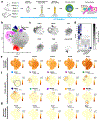
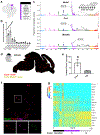
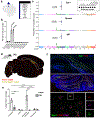
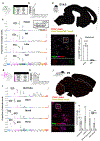

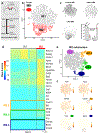
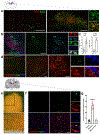
Comment in
-
Demystifying Microglia: And Now the Work Begins.Immunity. 2019 Jan 15;50(1):11-13. doi: 10.1016/j.immuni.2018.12.025. Immunity. 2019. PMID: 30650371
-
Microglia: Newly discovered complexity could lead to targeted therapy for neonatal white matter injury and dysmaturation.J Neonatal Perinatal Med. 2019;12(3):239-242. doi: 10.3233/NPM-190303. J Neonatal Perinatal Med. 2019. PMID: 31322582 Free PMC article. No abstract available.
References
Publication types
MeSH terms
Grants and funding
LinkOut - more resources
Full Text Sources
Other Literature Sources
Medical
Molecular Biology Databases

